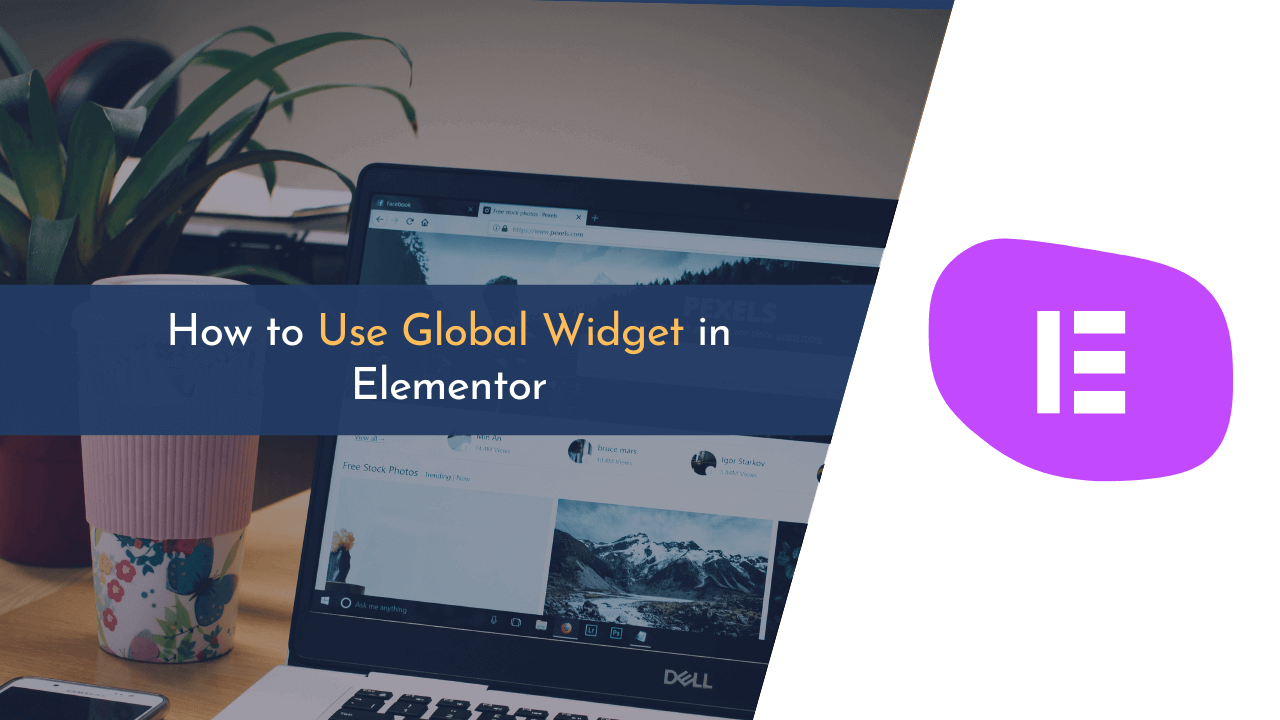Are you looking to use the global widget on your Elementor website? If yes, look no further than our blog!
Elementor is a powerful and popular page builder plugin for WordPress that allows you to create stunning websites easily. One of its standout features is the ability to create and reuse global widgets.
In this blog post, I will walk you through the steps of creating a global widget in Elementor. I will also show you how to use these global widgets on different pages of your website.
Whether you’re a beginner or an experienced user of Elementor, this blog post will provide you with a complete guide to using the power of global widgets and enhancing your website design.
So, let’s get started!
What Are Elementor Global Widgets?
Elementor global widgets are a powerful feature within the Elementor page builder plugin that allows users to create and manage the same widget sections across multiple pages on their website.
With the help of global widgets, blog owners and developers can save time and effort by creating widgets that can be easily edited and updated in one place, while being automatically reflected on all pages where the widget is used.
Furthermore, global widgets enhance efficiency when it comes to managing large websites with numerous pages. For example, instead of manually recreating similar elements across various pages, users can simply drag and drop a global widget onto any page where they want it to appear.
Why Use Elementor Global Widget?
There are plenty of reasons why you should start using global widgets in Elementor. Here, I have listed a few benefits of using it:
- Saves time and effort by eliminating the need to create widgets from scratch
- Allows for consistent design across multiple posts or pages.
- Changes in the global widget will automatically be reflected on all pages where it is used.
- Saves time as you don’t have to create similar widgets multiple times.
How to Use Global Widget in Elementor
Now that we know what a global widget is and why to use it, let’s see how you can create and use a global widget on your Elementor website.
Adding a global widget in Elementor is pretty simple and requires only a few steps. Before proceeding, keep a note that Global Widget is only available on Elementor Pro.
Step 1: Create a Global Widget
In this step, I will let you go through the process of creating your first Global Widget. Open Elementor Page Builder and add any widget you want to the editor.

For example, I am adding a Button to the editor.
Next, design your widget according to your preference, like changing color, text, and more. Once done, right-click your mouse on the widget and select “Save as a global,” as shown in the above image.

Next, simply assign a name to your Global Widget and save it.

You can also see all your Global Widgets under the “Globals” tab under Settings, as shown in the above image.
Step 2: Use a Global Widget
Now that we have successfully created the Global Widget, now it’s time to see it in action.
The best part is that you can use it both on Elementor-powered pages and also on default WordPress Gutenberg-powered pages.
1. How to Use Global Widget on Elementor Page Builder

To use the Global Widget on Elementor pages, navigate to “Globals” and drag it to the editor.
2. How to Use Global Widget on WordPress Gutenberg Editor

Elementor makes it very easy to use Global Widgets on Gutenberg pages. Open “Templates> Saved Templates” to access Elementor’s template library.
Next, click on the “Global Widget” tab to see all the saved Global Widgets.

Elementor provides each Global Widget with its unique shortcode that you can copy to add to other pages or posts.

Next, open any page or post where you want to add a Global Widget. After that, add the “Shortcode” block to the page and paste the Global Widget shortcode you have just copied in the previous step.
Voila!! You have successfully added a Global Widget to your WordPress website. You can see the preview of the page to see the results.
Editing Existing Global Widget

Need to make any changes to an existing Global Widget?
Don’t worry; you can do that easily. Simply, click on Global Widget, and you will see an option at the left sidebar where you can click “Edit” to make changes. Moreover, you can also click “Unlink” to remove the Global Widget and change it back to the normal widget.
💡 Recommended Readings…
Final Words
Learning how to use the global widget feature in Elementor can greatly enhance your website-building experience. By creating reusable widgets, you can save time and effort by easily adding them to multiple pages with just a few clicks.
Furthermore, the ability to customize and style your widgets gives you complete control over the appearance of your website. You can easily adjust fonts, colors, and layouts to match your branding or design preferences.
The above guide is very easy to follow; even a beginner can create and use Elementor global widget on their website. Still, have a question? Feel free to comment below!

